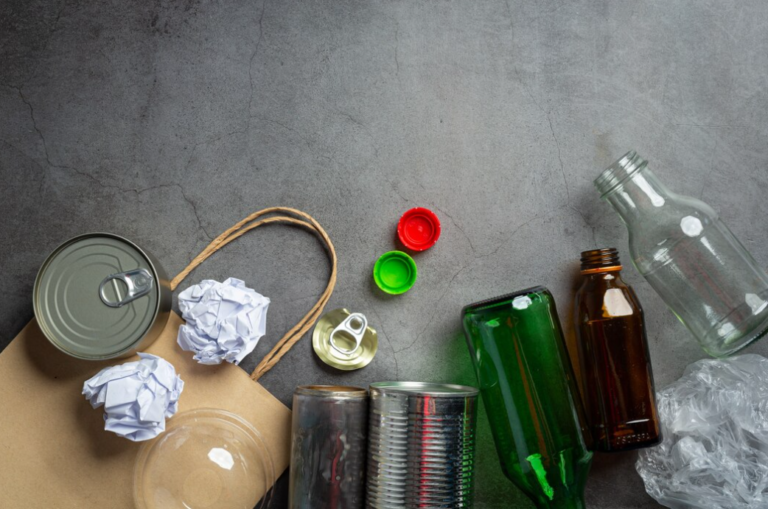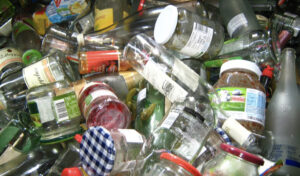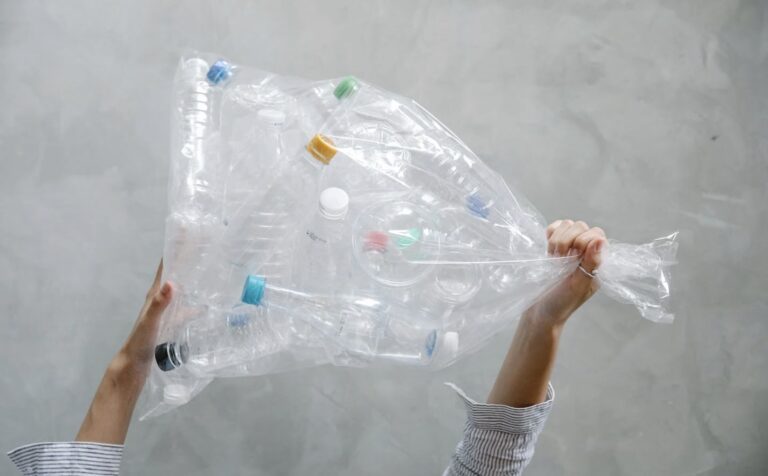Alt:
In an age of rapidly depleting resources and mounting environmental concerns, the role of recycling has become paramount. Each time we recycle, we embark on a green journey, a chain reaction that not only reduces waste but also conserves natural resources, saves energy, and reduces the need for landfills and incineration, mitigating greenhouse gas emissions in the process. Yet, how many of us pause to ponder the intricacies behind this seemingly simple act? How do the little decisions we make, like rinsing a can or segregating waste, influence the vast eco-friendly tapestry of recycling? This exploration doesn’t merely strive to celebrate the merits of recycling but aims to delve deeper, unveiling the significance of every step, every choice, and every nuance that makes recycling the environmental powerhouse it is today. Let’s journey together, unraveling the subtle art and science behind turning waste into wonders.
Recycling Requirements: The Cleanliness Factor
The cleanliness of your recyclables plays an integral role in determining their future usability. Though not all recyclers mandate the rinsing of items, it is undeniably beneficial to ensure minimal contamination. This minimization ensures smoother processing and prevents possible spoilage of other recyclables.
Different Recyclers, Different Needs:
Recycling, though a universal concept, is multifaceted in practice. Different recyclers, depending on their specialization and the resources at their disposal, have varying requirements. At its core, recycling is about converting waste materials into reusable products. However, the methods, machinery, and materials suitable for one recycler might differ starkly from another.
For instance, paper recyclers focus on transforming used paper into new paper products. Their process involves pulping, de-inking, and eventually reshaping this pulp into new sheets. The demands here contrast with, say, metal recyclers who deal with melting down and reforming metals. These processes, while sharing a common goal, operate on different principles and have distinct requirements. A paper recycler wouldn’t be equipped to handle metals, just as a metal recycler would find themselves ill-prepared to process paper.
Moreover, within the same domain, needs can vary. Some recyclers may specialize in certain types of plastics, given the diverse nature of plastic materials. PET plastic used predominantly for beverage bottles, and HDPE plastic, commonly used for containers and piping, are processed differently. Recyclers often prioritize one over the other based on market demand, available infrastructure, and regional consumption patterns.
As consumers and producers, recognizing these differences is pivotal. When we better understand the specific needs of each recycler, we can more efficiently sort and prepare our waste, ensuring it reaches the right destination and facilitating a more effective recycling process.
Impacts of Contaminated Recycling:
Contamination in the recycling stream is a pressing issue that impacts the efficacy and efficiency of recycling operations. When non-recyclable items or improperly cleaned recyclables enter the stream, it poses a myriad of problems.
Firstly, contaminated recycling can damage the machinery. For instance, plastic bags, when introduced into systems not designed for them, can wrap around gears and halt operations. This results in costly downtime and expensive repairs. Similarly, shards of broken glass mixed with paper recyclables can ruin the quality of the recycled paper.
Next, contamination can downgrade the quality of the recyclable output. A batch of recyclables mixed with non-recyclables or dirty materials may produce a final product that’s of lower quality, making it less marketable and reducing its economic value.
Furthermore, contaminated recycling can have environmental repercussions. If a batch is deemed too contaminated, it might be sent to a landfill or incinerated. Both of these options negate the environmental benefits of recycling, as landfills take up space and produce methane, while incineration releases carbon dioxide and other pollutants.
For recycling to achieve its desired environmental and economic benefits, it’s crucial for both individuals and industries to understand and mitigate the risks of contamination. Proper sorting, rinsing, and education can go a long way in preserving the integrity of the recycling stream.
Rinsing & The Environment: A Water Consumption Analysis:
The act of rinsing recyclables, particularly containers and bottles before placing them in the recycling bin, is a well-established practice. However, the environmental implications of this practice, especially concerning water consumption, are multifaceted and warrant closer examination.
Rinsing recyclables prevents contamination, ensuring that the materials can be effectively recycled. Contaminated items can interfere with the recycling process, leading to machinery breakdowns and degradation of the end-product’s quality. Therefore, rinsing is crucial for the success and efficiency of recycling operations.
Yet, water is a precious resource. In many parts of the world, freshwater scarcity is a growing concern. Therefore, the question arises: Does the water used to rinse recyclables offset the benefits of recycling? In regions with ample water supply, rinsing may have a negligible impact on water reserves. However, in drought-prone areas, the continual use of water for rinsing can exacerbate existing water shortages.
To address this, it’s essential to strike a balance. Adopting water-efficient rinsing techniques, such as using leftover dishwater, can mitigate the impact. Furthermore, advancements in recycling technology are paving the way for systems that can handle minor contaminations without the need for extensive pre-rinsing by consumers.
In conclusion, while rinsing plays a vital role in maintaining the quality of recyclables, it’s paramount to be mindful of water consumption and seek more sustainable methods that cater to the region’s specific water circumstances.
The Recycling Process: From Start to Finish:
Recycling is a dynamic and multi-stage process that transforms waste materials back into valuable resources. Here’s a comprehensive look at the journey of recyclables from start to finish:
- Collection: The journey begins with collection. Depending on the local infrastructure, recyclables might be collected curbside from homes and businesses or dropped off at dedicated recycling centers by individuals;
- Sorting: Once collected, recyclables are taken to sorting facilities. Here, advanced machinery and manual labor work in tandem to separate materials based on type and composition. Magnets might be used for metals, while optical sorters can differentiate plastics by type;
- Cleaning: The sorted materials then undergo a cleaning process. This step is crucial as contaminants can hinder recycling efficiency. Here, the materials are rid of any residues, glues, or non-recyclable components;
- Processing: The cleaned recyclables are then processed into a format suitable for manufacturing. This might involve shredding, melting, or pulping, depending on the material. For example, plastics are often pelletized, while paper is turned into a pulp;
- Manufacturing: These processed materials are then sent to manufacturers. They are used as raw materials to produce new products. Recycled glass, for instance, can become new bottles or jars, while recycled paper can be transformed into newsprint, cardboard, or even tissue paper;
- Distribution & Sales: The newly produced items are distributed to retailers, making their way back to consumers. The cycle can then potentially begin anew, emphasizing the circular nature of recycling.
This process, while resource-intensive, underscores the importance of recycling in reducing waste, conserving resources, and promoting sustainability. Effective recycling not only diverts waste from landfills but also reduces the need to extract and process virgin materials, further minimizing environmental impacts.
Best Practices for Effective Rinsing
Scraping off remnants, using residual dishwater for rinsing, and ensuring recyclables are dried properly can make a massive difference. Not only does it preserve the quality of your recyclables, but it also maximizes their usability.
How Does One Recycler Compare to Another?
Comparative Table: Recycler Practices & Requirements
| Recycler Name | Rinsing Requirement | Handling Contaminated Items | Acceptable Contamination Level (%) |
|---|---|---|---|
| Waste Management Inc. | Recommended, not mandatory | Manual and mechanical sorting | Less than 1% |
| Republic Services Inc. | Mandatory for items with residues | Robust cleaning processes in place | Less than 0.5% |
| Local Recycler XYZ | Recommended | Basic mechanical sorting | Less than 2% |
Benefits Beyond Recycling: A Holistic View:
Recycling, while fundamental to sustainable waste management, is just one facet of a comprehensive environmental strategy. Looking beyond recycling provides us with a holistic view that emphasizes the importance of a circular economy and touches on multiple avenues of waste reduction.
- Reduced Resource Exploitation: By reusing materials, we minimize the demand for new raw materials. This not only conserves scarce resources but also reduces the environmental damage linked with extraction, such as habitat destruction and greenhouse gas emissions;
- Energy Conservation: Producing items from recycled materials generally consumes less energy compared to manufacturing from virgin materials. For instance, recycled aluminum production uses 95% less energy than new aluminum from bauxite ore;
- Economic Stimulation: Recycling industries create numerous jobs in collection, processing, and selling recycled commodities. These jobs contribute significantly to local economies and can often provide employment in areas where opportunities might be scarce;
- Waste Reduction: Beyond recycling, a holistic approach includes efforts to reduce and reuse. This trims the volume of waste that requires management, thereby cutting the costs and environmental footprint associated with disposal;
- Community Cohesion: Recycling and broader sustainability initiatives often foster a sense of community. Shared goals and collective action, whether in neighborhood clean-ups or communal composting efforts, can unite individuals for a common cause.
Taking a broader view of the benefits beyond recycling allows us to appreciate its role in a larger environmental context and emphasizes the interconnection of various sustainable practices.
The Global Perspective on Recycling Etiquette:
Recycling practices, though universally acknowledged, can vary considerably across different cultures and countries. A global perspective helps us recognize these nuances and adapt our recycling etiquette accordingly.
- Regulatory Differences: Many countries have unique regulations governing recycling. For instance, Germany’s Green Dot system requires manufacturers to pay for the recycling of their packaging, while South Korea uses a volume-based waste fee system to promote waste reduction;
- Cultural Attitudes: Some societies have long-standing traditions of recycling and reusing, stemming from historical or cultural values. Japan, for instance, has a deeply ingrained culture of waste minimization, reflecting in their meticulous recycling routines;
- Economic Factors: In certain regions, informal recycling sectors play a pivotal role. Waste pickers in countries like India and Brazil often sift through waste, retrieving recyclable materials, thus contributing substantially to the recycling chain;
- Technological Advancements: Developed nations with advanced infrastructure can manage complex waste streams more efficiently, often adopting single-stream recycling. In contrast, developing countries might have more basic systems, necessitating a stricter separation of recyclables by residents;
- Educational Outreach: The effectiveness of recycling often hinges on public awareness. Nations that invest in educating their populace about correct recycling practices tend to witness higher compliance and less contamination.
Understanding these global nuances is crucial for travelers, businesses operating internationally, or even for curious individuals wishing to gain a comprehensive view of recycling etiquette worldwide. Embracing a global perspective ensures that our efforts to recycle align with local norms and maximize the environmental benefit.
Making the Recycling Habit Stick
Promoting awareness, facilitating education, and providing convenient recycling solutions can drive more people to adopt this eco-friendly habit. By understanding the impact of our actions, we can create a more sustainable future for our planet.
Video Guide
In order to answer all your questions, we have prepared a special video. Enjoy watching it!
Conclusion
As we’ve journeyed through the realms of recycling, one truth emerges prominently: every action counts. It’s not just about placing an item in a recycling bin; it’s about understanding and optimizing that item’s journey through the recycling process. Proper preparation and adherence to guidelines ensure that our recyclable waste achieves its maximum potential, reflecting in a sustainable and efficient system. Furthermore, these small yet impactful actions contribute to a bigger picture, one where humanity treads lightly on Earth, harmonizing with nature rather than exploiting it. As we move forward, let’s not just recycle; let’s do it mindfully, knowing that every rinsed can, every correctly sorted paper, and every informed choice we make, adds up to a brighter, greener, and more sustainable future for all.









+ There are no comments
Add yours